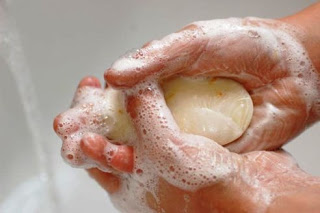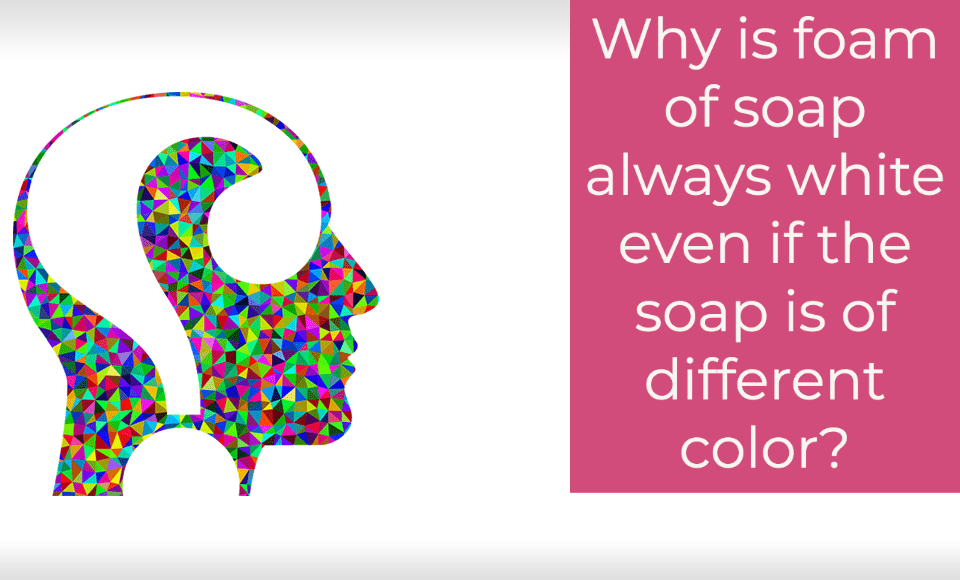Soap is one of our daily essentials. Without it, we cannot clean our dishes, wash our clothes, and not shower. Soaps make us maintain our hygiene, clean our homes, and make our surrounding fragrant.
Soaps come in different scents and colors. Some use natural ways and organic ingredients in soap making. Herbs, minerals, micas, and flowers are natural colorants commonly used for soaps. Some enjoy this craft on natural soap making as they make a living in the comfort of their homes. Indeed the soaping world is filled with colorful and exciting design inspiration. Vibrant reds, swirls of sparkles, and layers of every color imaginable.

The very thin layer of the soap is transparent on its own, but the foam looks white because of a few various reasons. When you wash your hands, there are three things present: water, soap, and air. The water tries to avoid contact with air and isolate itself, resulting in foams with very tiny bubbles. Besides, this foam is always white even though the soap is red or in another color because bubbles store within them have relatively more air than soap material. (click here for more details)
The foam is a large collection of tiny soap bubbles. Each bubble is a fragile film of the soap solution. Since soap is a surfactant that affects the surface tension of the liquid, it can lower the surface tension of water causes the film to stretch. It increases the total surface area of the film, which makes the deficient color in the film to spread out and barely visible to the eyes. (click here for more details)
Another factor that makes soap lather white is the scattering of the light. Natural light is white, so what we see in the foam or the bubbles reflects the natural light in our surroundings. If, for instance, you are in a room having red lighting, the foam would appear reddish as well.
When you use any soap, mix it with water and rub it; only a teeny-tiny bit of it goes to the water, and the coloring agent or substance is considerably diluted. However, for curiosity sake, try to carve off a piece of a colored soap (red), for example, as big as an almond, then dissolve it in a transparent glass by gentle slow stirring. You will notice that the water inside the glass will eventually turn reddish but not with a similar shade to that of the soap because it is already mixed with water. It is because the colored components of the soap are transferred to the water and did not become white because you only did a gentle stirring.
If you prefer using organic soaps, it makes use of natural colorants. It might not give you the same vibrant and bold colors as the artificial colorants, but you can get the soft to deep muted tones that nature intended. While some offer the only color, some natural dyes give you more, such as exfoliation, antioxidants, or other benefits.
Here are some sample colorants and their health benefits:
- Annatto: (infused in oil) produces yellow to orange color
- Beetroot powder: results in squash yellow color; contains antioxidants
- Black walnut hull: (dried, and ground) adds purple to black specks; effective exfoliator
- Carrots: (ground or powdered, raw) produces yellowish-orange color; contains beta carotene
- Chamomile: (dried, powdered) renders a beige to yellow color
- Cinnamon: brown; it might not be suitable for some skin types
- Chocolate: (melted chocolate bar) give brown color
- Coffee: (instant) brown to black; best antioxidant and odor eliminating
- Green tea powder: brownish-green color; antioxidants
- Spirulina: produces green to bluish-green color
- Tumeric: results in yellow color
Artificial colorings are oxides in powdered form. They are processed in laboratories to prevent any chance of bacteria or other compounds from contaminating the mix. Although synthetic, they are often made with natural ingredients and are prepared to mimic things from nature. They can provide more vibrant colors.
